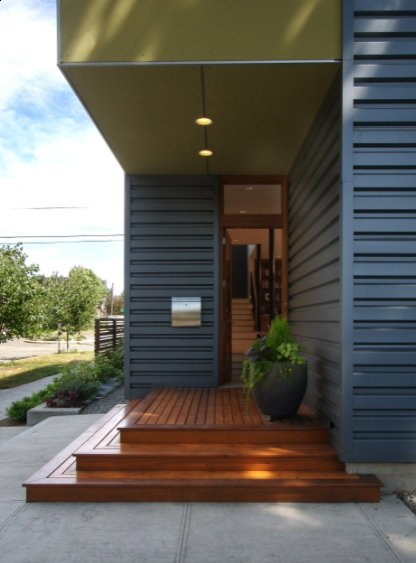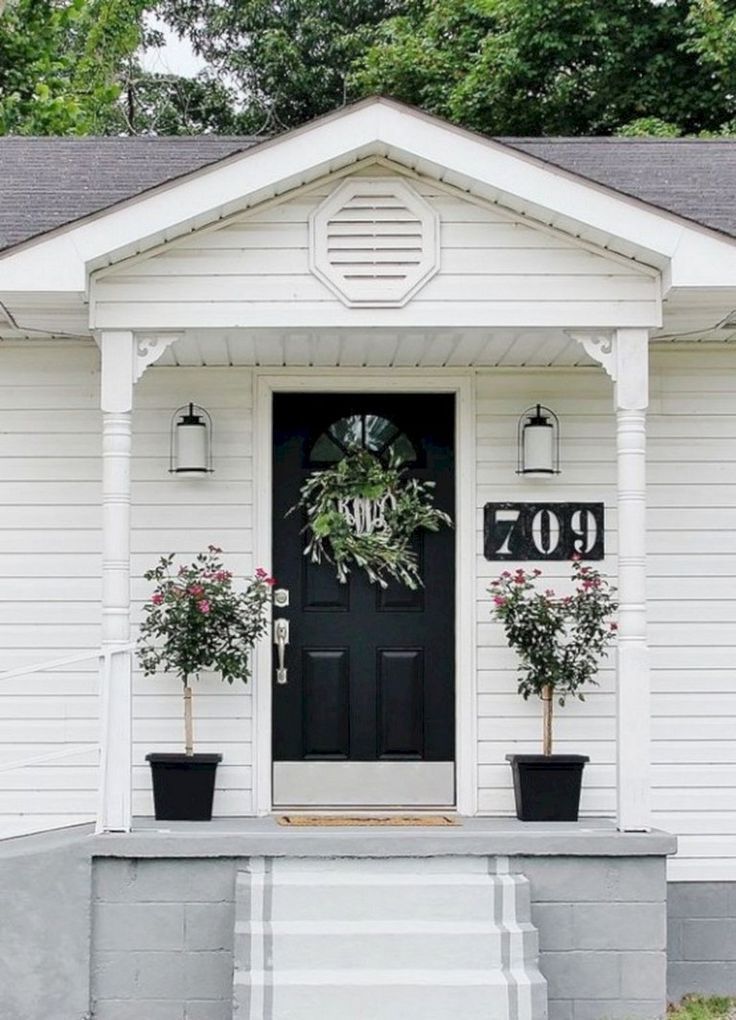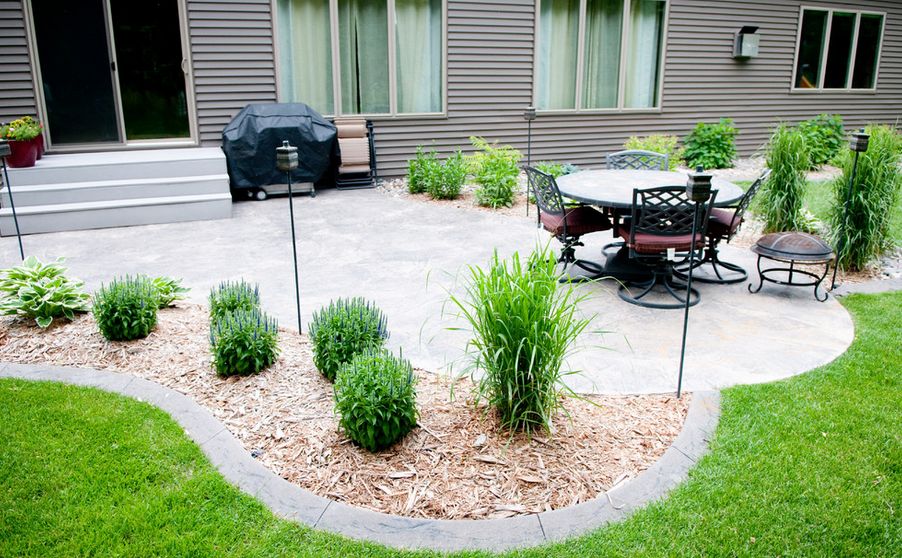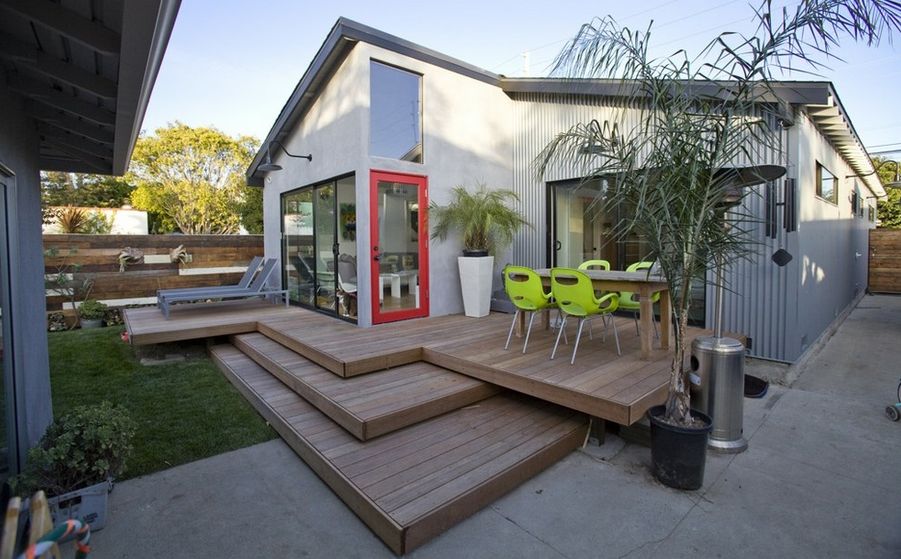Whether it’s spring, summer, autumn, or winter, it’s great to enjoy the outdoors, even if it’s only from your balcony, porch, veranda, patio, or deck. And speaking of that, what’s the difference between all these outdoor living spaces?
They are certainly similar to a certain extent and we often use the terms interchangeably. Still, this doesn’t make them synonyms. There are, in fact, clear differences among the outdoor spaces described by all these terms.
Porch
A porch is a covered shelter that projects from the front entrance of a house or building. The structure is external to the walls of the building but it may be enclosed by certain types of frames including walls, columns or screens, extending from the main structure.
What Are the Different Types of Porches
Not all porches are the same even though most are not at ground level. In fact, there’s quite a variety of types based on their design, placement and other factors.
An Open Porch
This style doesn’t have any sort of side walls or enclosures. It’s simply an elevated structure with a covering overhead. This type of porch provides a close connection to the outdoors.
A Front Entry Porch
As the name clearly suggests, this type is directly attached to the front door and marks the main entrance of a house. It’s typically quite small and simple and often has a set of steps leading up to the front door.
A Farmer’s Porch
This is a covered porch typically attached to a farmhouse-style structure. It has a cover and support beams as well as railings. It goes along the front, creating an extension along the width. It’s long and narrow and big enough to accommodate large groups of people and can be furnished in lots of different ways.
A Back Porch

This is more or less the opposite of a front entry porch. It’s located at the back entrance and connects at the back door. It’s often open and has a roof and it can be quite a large porch, depending on the home. A back porch provides lots of privacy.
A Detached Porch

While other types of porches are attached to the house, this one is not. It’s a free-standing structure somewhat like a pavilion or a gazebo. It can connect to the main structure via a walkway or a pathway and can have a variety of different designs.
A Screened Porch

This is also a rather special type of enclosed porch in the sense that it’s surrounded by screens. It is a covered space that can be used all year round since it’s protected from the elements and connected to the building. In some cases, it’s considered an extension of the living area.
A Rain Porch

A rain porch, as you can guess, is designed to block out the rain. It has a cover with an extension similar to an awning so the angle allows rain to drip down. It also provides protection from the wind and allows users to enjoy the porch regardless of the weather.
A Portico

This is a type of front entry porch. It has a rather specific design with a roof and several support columns. It’s not meant to be used as an entertainment space or an area where people lounge and relax. It’s merely a structure that marks the entrance and adds depth and detail to the house.
A Lanai

This design comes from Hawaii and is sometimes found in areas with warm climates. It is covered and can also have walls but it’s also open to the elements on at least one side. It can be quite big and it provides an outdoor space that can be used all year long.
Balcony
A balcony is a platform on the outside of a building, enclosed by walls or balustrades, supported by columns or console brackets. The platform projects from the wall of a building, usually above the ground floor. Balconies are typically small and are not used as social spaces or for entertainment purposes.
What Are the Different Types of Balconies:
We all have a clear idea of what a balcony is but the actual image and design can differ from case to case. That’s because there are actually several different types of balconies and they’re not really that similar to one another.

A True Balcony
This is what many of us envision when trying to describe a balcony. It’s a space on an upper floor with railings and it’s open to the outdoors. It is generally larger and can hold outdoor furniture so you can have a couple of chairs and a table or a bench to enjoy the view from up top.
A Faux Balcony
This is a space that is designed to look like a balcony but in fact, it’s not. It doesn’t have a floor so you can’t really stand on it but it does have rails in order to give the impression of an actual balcony. It’s mostly a decorative structure meant to make the exterior of a house look more interesting.
A False Balcony
Not to be confused with a faux balcony, this one is basically just a small regular balcony. It has a little bit of floor space and railings but it’s not really big enough to hold furniture. It’s often a way to extend a room and to make it feel more open and airy especially when it’s part of an apartment building.
A Mezzanine Balcony
This is a real balcony but indoors. It has a floor and railings but it’s inside the house. It can be something you find in tall houses with multiple floors. A mezzanine balcony can definitely make a space look more interesting and can serve a variety of purposes.
Veranda
This term has two forms, ‘verandah’ also being correct, although veranda without an ‘h’ is usually preferred. A veranda is a covered structure along the outside of a house. It’s level with the ground floor and often extends across both the front and the sides of the structure. It’s an outdoor living space that can be partly enclosed by a railing.
What Are the Different Types Of Verandas:
There’s plenty of diversity when it comes to verandas as well. There are several different types of veranda to choose from and lots of designs to pick from.
A Flat Roof
This is one of the most common types of veranda. It has a simple design with a flat roof and is typically very versatile. It can be a large or small space of many different shapes and it can suit all styles.
A Curved Roof
A veranda with a curved roof has a distinctive look and stands out more compared to one with a regular flat one. It can also appear more elegant and detailed and is potentially a focal point.
A Gazebo
Everyone knows what a gazebo looks like. Although the designs and sizes of this outdoor structure can vary quite a bit there are still similarities no matter what style you choose. The design of a gazebo is more complex than that of a simple veranda with a flat roof for example.
A Pergola
This is a structure that can either be attached to the house and look like an extension, or one that can be detached and totally separate. The designs and styles can vary.
A Sunroof
A veranda with a sunroof is very versatile. The advantage, in this case, is that the roof can be opened or closed so that you can either enjoy the shade or so that you can see the sky and enjoy the sunlight. You can open or close it based on the weather and your own preferences or needs.
A Gable Roof
A veranda can also have a classic gable roof which can give it a look that’s a bit more traditional or rustic compared to other styles. A gable style also allows the rain and snow to drip down instead of collecting on top of the veranda.
Patio
A patio is a paved outdoor area adjoining a house at ground level, generally used for dining or recreation. The term comes from Spain, where its meaning is different (inner courtyard).
Common materials used to build these types of outdoor structures include concrete, stone and bricks but also tiles or cobbles. Patios are often decorated with plants and outdoor furniture.
Different Types of Patio Materials:
It’s not just the design of a patio that matters. The material you decide to use to build the patio is very important as well. Choose the right material based on your needs.
Concrete
Concrete is very commonly used for patios. It’s nice because it allows you to create a very flat and clean surface with a uniform design. Moreover, concrete is very versatile and can be poured in all sorts of layouts, the patio to have any shape you want without being limited to using only straight lines. Concrete is also a very resilient material.
Asphalt
This is also a common material used for patios. It’s appreciated for its affordable price and its versatility. Asphalt is flexible and can withstand changes in temperature throughout the year. It also has a simple and flat look that gives you a smooth surface to work with. An asphalt patio can be easily and quickly repaired if needed.
Pavers
Another popular option is to use paving stones or pavers to create a nice-looking patio. Pavers can be made from different materials, concrete and brick being two of the most common ones. They can be arranged in a variety of different patterns and they come in different shapes and colors. Their colors can fade over time and they can also be damaged, but repairs are easy to do.
Natural stone
Flagstone patios are favored for their simplicity and their natural, organic look. Unlike pavers, natural stone doesn’t fade over time and ages beautifully, allowing you to keep your patio for a very long time. The stones have irregular shapes which can sometimes make installation less easy but at the same time, this is one of their most appreciated features.
Gravel
Gravel patios have their pros and cons. On one hand, they’re easy to install and can be completely done as a DIY project. They also facilitate drainage and can be relatively cheap in general. On the other hand, gravel is a loose material and the small pieces are likely to get pushed around and scattered throughout the yard which can require quite a bit of maintenance. A gravel patio is also not as easy to walk on as a concrete one. The same pros and cons apply if you want to build your patio using sand.
Deck
A deck is a flat, elevated platform adjoining a house. Decks are typically made of lumber and are elevated off the ground. They can include spaces for barbecuing, dining and seating.
A deck generally must be enclosed by a railing. In some cases, this outdoor structure can also be covered by a canopy or pergola.
Different Types Of Decks:
Before going ahead and building the first type of deck that comes to mind, it helps to do a bit of research and check out all the options for these outdoor structures. It might turn out that some other type of deck would be better suited to your space and your needs. A deck is essentially an outdoor platform, but there are a number of varieties.
Attached Deck

The description is pretty straightforward. This is a deck that’s attached to the main structure, typically at the back. Frequently, the house is either L-shaped or U-shaped, which allows the deck to fit perfectly at the intersection of the walls.
Detached Deck

As expected, this is a deck that is freestanding. It can be positioned anywhere on the property, as close to or as far away from the house as preferred. It can adapt to uneven or difficult terrain and there’s usually a pathway or a set of steps connecting it to other points in the yard.
Wraparound Deck

Some houses have a wraparound deck that basically extends from the main structure on all sides. It provides a covered outdoor space that all the rooms can access. It’s slightly elevated and creates a smooth transition between the indoors and the outdoors.
Multilevel Deck

This type of deck is great for properties that have a steep slope or different elevations. It’s not a single deck per se but a whole series of decks that are interconnected and spread across multiple levels. They’re perfect for hills, slopes and rocky terrain where other types of decks would be too inconvenient or difficult to build.
Poolside Deck

It’s common to have a deck around a swimming pool or a pond. The deck is often made out of wood which doesn’t get as hot in the sun as concrete or other materials do. Thus, swimmers can comfortably walk on it as they get in and out of the pool. A poolside deck is also commonly accessorized with lounge chairs and umbrellas. It can also have an outdoor kitchen.
Entryway deck

This type of deck is similar to a front porch but the difference here is the roof. An entryway deck is not completely covered overhead and has a more open design. It usually has benches and planters or other accessories and it can take a variety of different shapes.
Rooftop Deck
Houses with flat roofs sometimes feature a rooftop deck. This can be an open or covered space that provides a nice view of the areas below and the surrounding landscape. Rooftop decks have safety rails and can be placed on top of garages or the main structure. They’re also fairly common in urban areas.
Top Deck Materials:
Decks are almost exclusively built out of wood, which in a way makes choosing the material easier than in other cases. However, there’s a wide variety of types of wood to choose from and they have different characteristics that may or may not appeal to you.
Cedar
Cedarwood is often preferred for a deck because it’s inexpensive, durable and easy to work with. Its natural beauty gives it lots of character. On top of that a deck built from cedarwood can last anywhere between 15 to 20 years with proper maintenance.
Redwood
This type of wood is valued for its strength and for the fact that it’s lightweight and easy to work with, which makes it suitable for DIY projects. However, redwood can be quite expensive compared to other materials. Like a cedarwood deck, one built out of redwood last between 15 to 20 years with regular maintenance.
Pressure-treated Wood
This is a very common material for a deck and part of the reason is its very low cost compared to a lot of the other options. It’s made of fir that is treated with anti-rot and insecticidal agents that keep the deck in good shape and don’t present health hazards unless they burn. Decks made out of pressure-treated wood can last for a very long time (several decades) but require refinishing every year.
Vinyl
This is a great material if you want to build a deck that’s basically maintenance-free. PVC is very resilient, easy to clean, isn’t damaged by water or insects and can last for a very long time. It’s quite expensive, comparable to a redwood deck from this perspective. It comes in a variety of different colors.
Composite
This is also a low-maintenance deck material that can last for a very long time. It’s made of wood fiber combined with recycled polyethylene and has a texture that mimics solid wood. It’s a versatile deck material and requires minimal maintenance but can allow mold to grow if not cared for properly. The price is similar to that of vinyl decking.
Ipe
This is a type of South American hardwood that is naturally resistant to rot. It’s also very durable which makes it an excellent choice for deck building. However, it’s also difficult to work with and requires yearly maintenance in order to keep its rich color and appearance. It’s the most expensive deck material on this list.
FAQ
What is a veranda?
A veranda is an open-air porch that has a roof and is attached to the outside of the main floor of the house. It’s often partly enclosed by and sometimes runs across the front of the house as well as the sides. Verandas originated in Australia during the 1850s before making their way to Victorian England, the southern US and places with warm climates.
What is the difference between a porch and a veranda?
A veranda has a roof and is often partly enclosed. It extends along the outside of the house and sometimes the sides. By contrast, a porch may be covered but the sides are open and typically only have a railing. Actually, many say that a wrap-around porch is really a verandah.
What is the difference between a balcony and veranda?
A veranda is a structure attached to the house at the ground floor. It can be attached to two or more sides of the building. By contrast, a balcony is attached to the house or building on an upper floor and does not have access to the ground.
What is the difference between a balcony and a terrace?
A balcony is a small platform attached to an upper floor on a house or building. It’s typically accessed through a single room. On the other hand, a terrace is an open space, but it’s not necessarily attached to the house. Typically, you can access a terrace from multiple rooms or locations.
What is the difference between a patio and a deck?
Patios are flat surfaces on the ground and commonly consist of concrete, stone or pavers. They are open on all sides and don’t generally require a railing since they’re not elevated. Decks are generally elevated and built from wood or composite material.
The post What is the Difference Between a Porch, Balcony, Veranda, Patio and Deck? appeared first on Home Decorating Trends - Homedit.











0 Commentaires